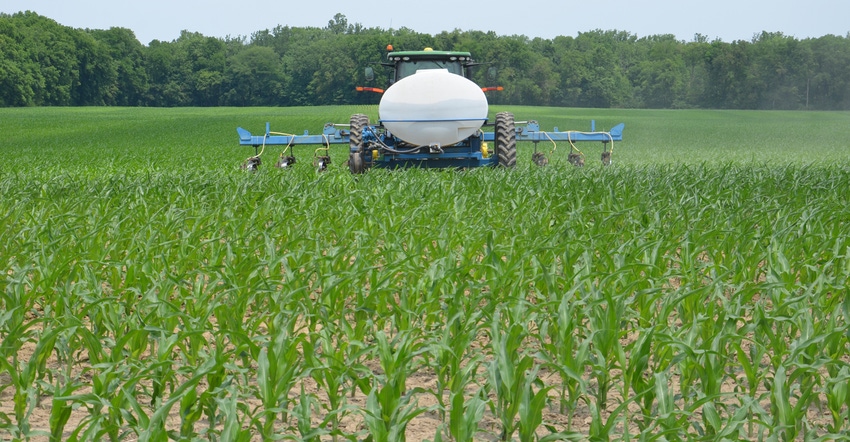
Could you cut back on hard-to-get nitrogen for corn if you add a nitrification inhibitor? Which nitrogen rate should you settle on with such high prices?
John McGuire says crop consultants in the Amplify Network field many questions like these. McGuire is chief innovation officer for Brookside Labs and the Amplify Network of crop consultants. He has data based on Amplify trials with cooperating farmers in Indiana, Ohio and Illinois to help answer these questions.
Farmers working with consultants carried out nitrogen rate trials from 2016 through 2018. In the current three-year trial, farmers compare reducing rate and adding a nitrification inhibitor vs. the regular rate.
“You need clean, accurate data to trust the results,” McGuire says. “We work closely with farmers and consultants to make sure application equipment and yield monitors are calibrated correctly.”
Nitrogen rate trial
The nitrogen rate trial used five rates: 100, 200, 150, 200 and 250 pounds per acre. The trial consisted of 150 fields, with the trial replicated four times within each field. The goal was making comparisons between pairs of rates as to which rate returned the most profit.
“The easiest one to answer is the 200- vs. 250-pound rate,” McGuire says. “The 200-pound rate was most profitable 98% of the time in 2016.”
The 2017 season was an outlier, meaning it was skewed compared to the other two years. Many locations are in northwest Ohio and northeast Indiana, and 2017 was a wet season there. More nitrogen was lost than normal, McGuire says. Combining all three years, economics still highly favored 200 vs. 250 pounds per acre.
The average breakeven point across the trial was in the range of 180 to 200 pounds per acre. Whether the 150- or 200-pound rate won depends on which prices you use for corn and nitrogen, McGuire says. You can plug in $6 corn and $1-per-pound N, about right today, or $4 corn and 40-cents-per-pound N, which is more normal over time. At the latter prices, the 200 rate wins about 40% of the time, pointing toward the 180-plus-pound typical rate.
Nitrification inhibitors
The nitrification inhibitor trial included four traditional commercial products plus a biological-based inhibitor. The premise was reducing nitrogen rate by applying 75% of the normal nitrogen amount plus an inhibitor, compared to applying the full rate with no inhibitor. To make comparisons, McGuire assumed $5 corn and nitrogen at 80 cents per pound.
“So far, there is a 50-50 chance of being more profitable at the reduced rate with an inhibitor compared to the normal rate,” he says.
If that sounds like a cop-out, it isn’t. “In about 49% of the trials, the regular rate wins, and 49% of the time the reduced rate with inhibitor wins,” he explains.
So, what do you do? “There are differences that explain some of the variation,” he says. “For example, some soils are higher in cation exchange capacity. You could dig into the data and find situations more like where you farm. See which approach worked best on those farms.”
The next step would be trying it yourself. “Try a product and run a test,” he suggests. “Be sure to leave strips where you follow your normal program. Then make your own comparisons.”
About the Author(s)
You May Also Like




